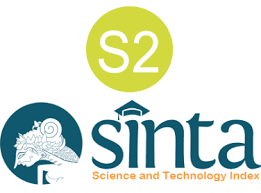Online Submissions
Registration and login are required to submit items online and to check the status of current submissions.
Already have a Username/Password for Andalas Journal of International Studies (AJIS)?
Go to Login Start New SubmissionNeed a Username/Password?
Go to RegistrationSubmission Preparation Checklist
As part of the submission process, authors are required to check off their submission's compliance with all of the following items, and submissions may be returned to authors that do not adhere to these guidelines.
- The submission has not been previously published, nor is it before another journal for consideration (or an explanation has been provided in Comments to the Editor).
- The submission file is in Open Office, Microsoft Word, RTF, or Word Perfect document file format.
- Where available, URLs for the references have been provided.
- The text is double -spaced; uses a 12-point font; Times New Roman; employs italics, rather than underlining (except with URL addresses); and all illustrations, figures, and tables are placed within the text at the appropriate points, rather than at the end.
- The text adheres to the stylistic and bibliographic requirements (Chicago style) Please see AUTHOR GUIDELINES
- The paper can be written in English or Bahasa Indonesia, 4000-6000 words.
Here is the writing system used:
- Title (specific& effective) is written between 10-20 words.
- Name of Author/s (without title), affiliation institution, and email address.
- Abstract (150-200 words) is has to be written in English and include keywords. The maximum numbers of the keyword are 10 words.
- Introduction
- Research Method
- Discussion and analysis
- Conclusion and Recommendation (where necessary)
- References
- Bibliographies and Acknowledgements (where necessary)
Copyright Notice
1. License
The non-commercial use of the article will be governed by the Creative Commons Attribution license as currently displayed on Creative Commons Attribution-NonCommercial-ShareAlike 4.0 International License.
2. Author’s Warranties
The author warrants that the article is original, written by stated author(s), has not been published before, contains no unlawful statements, does not infringe the rights of others, is subject to copyright that is vested exclusively in the author and free of any third party rights, and that any necessary written permissions to quote from other sources have been obtained by the author(s).
3. User Rights
AJIS wants to share articles published as free as possible. Under the Creative Commons license, it permits users to copy, distribute, display, and perform the work for non-commercial purposes only. Users will also need to attribute authors and AJIS on distributing works in the journal.
4. Rights of Authors
Authors retain the following rights:
- Copyright, and other proprietary rights relating to the article, such as patent rights,
- The right to use the substance of the article in future own works, including lectures and books,
- The right to reproduce the article for own purposes, provided the copies are not offered for sale,
- The right to self-archive the article.
5. Co-Authorship
If the article was jointly prepared by other authors, the signatory of this form warrants that he/she has been authorized by all co-authors to sign this agreement on their behalf, and agrees to inform his/her co-authors of the terms of this agreement.
6. Termination
This agreement can be terminated by the author or AJIS upon two months’ notice where the other party has materially breached this agreement and failed to remedy such breach within a month of being given the terminating party’s notice requesting such breach to be remedied. No breach or violation of this agreement will cause this agreement or any license granted in it to terminate automatically or affect the definition of AJIS.
7. Royalties
This agreement entitles the author to no royalties or other fees. To such extent as legally permissible, the author waives his or her right to collect royalties relative to the article in respect of any use of the article by AJIS or its sublicensee.
8. Miscellaneous
AJIS will publish the article (or have it published) in the journal if the article’s editorial process is successfully completed and AJIS or its sublicensee has become obligated to have the article published. It may conform the article to a style of punctuation, spelling, capitalization, referencing and usage that it deems appropriate. The author acknowledges that the article may be published so that it will be publicly accessible and such access will be free of charge for the readers.
Privacy Statement
The names and email addresses entered in this journal site will be used exclusively for the stated purposes of this journal and will not be made available for any other purpose or to any other party.

















